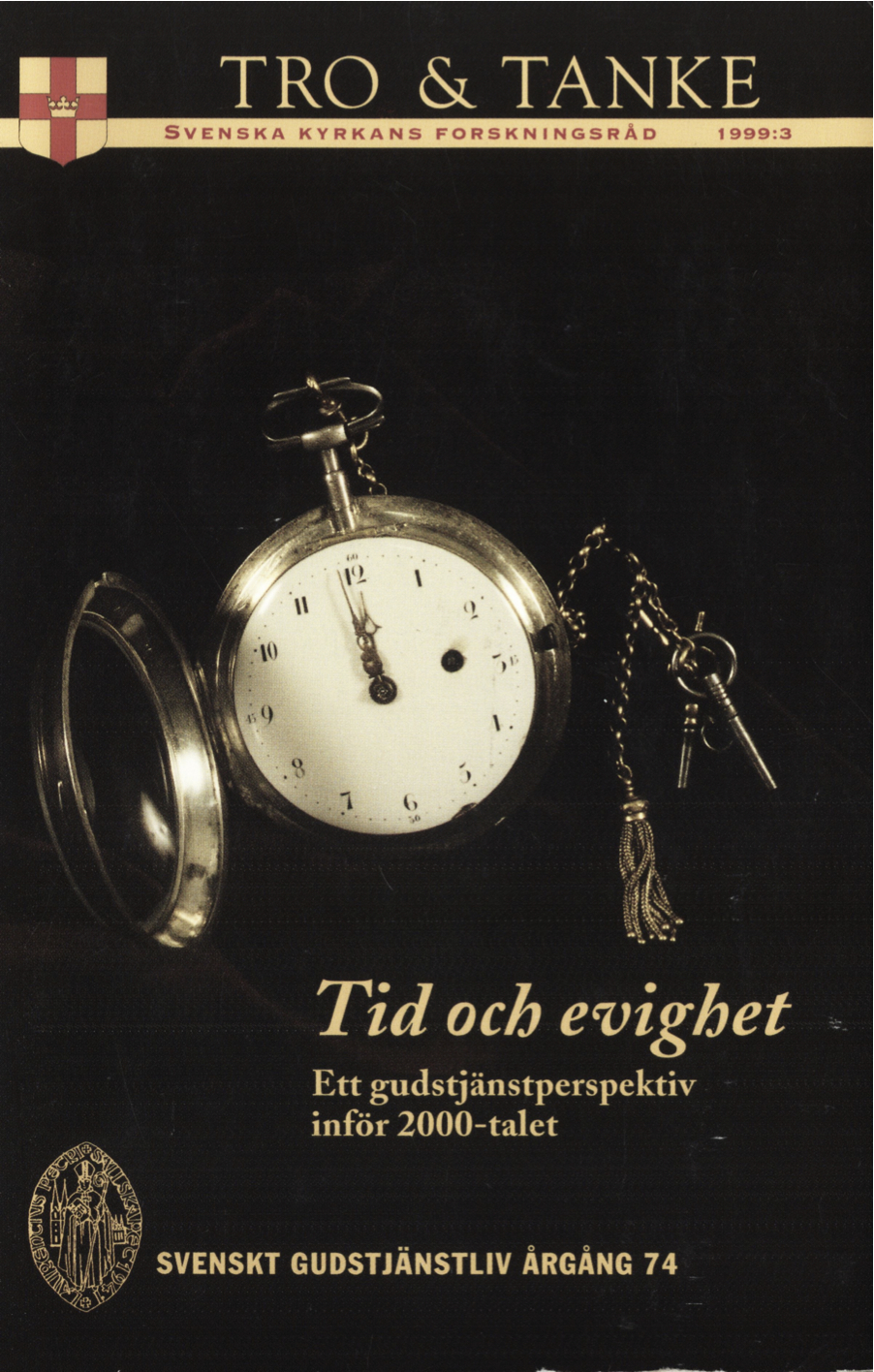Tid och evighet i psalmer
Abstract
This article deals with the concepts of time and eternity in Christian hymns. It offers an analysis of what hymns in Swedish, English and Ger man, considered as theological narration, say about time and eternity. The focus is not on definitions of time and eternity but on their relation to each other.
There is a given hierarchy in the relation of time and eternity in classical hymns. Time, though not necessarily conceived of as negative, is only preliminary and a more or less comfortable prelude to eternity. Time means darkness, veil, and night, whereas eternity means morning, day, summer, and clarity. Time is understood in terms of its relation to eternity: bad times strengthen the dimensions of comfort and hope belonging to eternity; good times intensify the expectations on eternity of reaching heights of bliss and glory undreamed of.
It can he noticed that hymns know of more than one way to describe the relation between time and eternity. In some hymns eternity is supposed to be just the continuation of time on the one hand. On the other hand, eternity is imagined as that which actively intervenes and puts time to an end, or as that which enters time and enriches it. A number of hymns use the metaphors of sea and shore; time appears as an island in the ocean of eternity or time is like an inland sea surrounded by the shores of eternity.
20th century hymns tend to focus more on the here and now and to leave eternity beside. Where classical hymns look at time as subordinated to eternity, modern hymns prefer to relate to eternity from the point of view of time. The aim is not peace beyond time, hut peace within time. It is about “hope for today”. Globalisation and ecological and nuclear threats may have contributed to a new understanding of eternal salvation. Not only the salvation of individual human souls or of a certain number of human souls, but also the salvation and liberation of the whole creation is the concern of many modern hymns. Thus, from having been the obvious goal whose authority could shape life on earth, eternity tends to be reshaped into a dimension of peace and hope, the value of which is determined by its capacity of offering luck and comfort here and now.
A corresponding development can he traced concerning the concept of future. Although not used very frequently, its history reveals a characteristic change. In classical hymns, future tends to appear as something out of control which ought confidently to be left to God. In a way, future is synonymous with heaven. Modern hymns, however, seem to conceive of future as synonymous with hope. Future no longer appears more or less automatically from the hands of God; future is menaced, mostly by humans themselves. Heavenly future is no longer a goal of its own dignity; it is asked for as something which can be integrated into the here and now, as something which helps people to form the world so that good (immanent) future is possible.
The basic human experience of time is its perishability. “Time, like an ever-rolling stream, hears all its sons away” (Isaac Watts). Consequently, human beings take refuge in what is eternal, reminding themselves that all time is God’s time and that their lives should be conducted in an ethical way. Some modern hymns deal with problems of stress and lack of time, whereas older hymns rather ask to be kept from evil times and for the shortening of periods of probation. As human power over time and future increases, we can notice a growing importance of time as the space of life. The role of time is not to prepare for eternity, but eternity serves as a model for the good and successful shaping of life within time.
What has been gained by this development is a more active interaction between time and eternity. Eternity is more than that which comes after, and time is more than that which is before the real thing. There is a danger, however, of reducing eternity to an instrument of immanent happiness. Eternity then runs the risk of being integrated into time and losing its otherness, its capacity of criticizing and calling into question. Time which is deprived of the relation to its other— eternity— becomes both absolute and atomized. This may lead to continuous acceleration and in the long run to an incapability of meeting the other, the unknown and strange.
Downloads
Publicerad
Nummer
Sektion
Licens
© författarna, Laurentius Petri Sällskapet för svenskt gudstjänstliv samt Artos & Norma bokförlag. Det är tillåtet att kopiera och använda material ur Svenskt Gudstjänstliv för forskningsändamål om källan anges. För övriga ändamål kontakta respektive artikelförfattare samt förlaget. Särskilda restriktioner kan gälla för bildmaterial.


